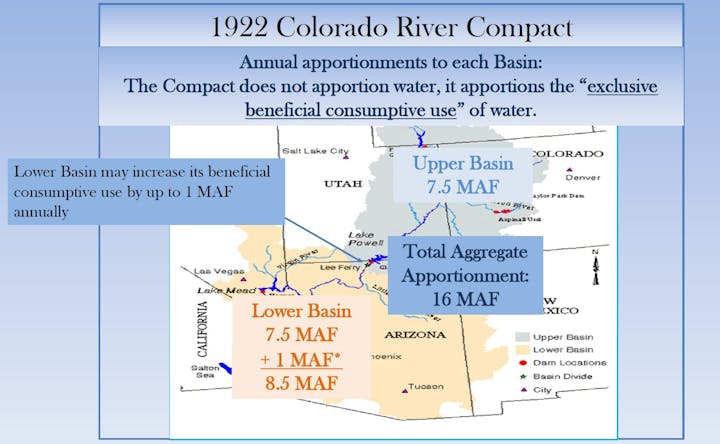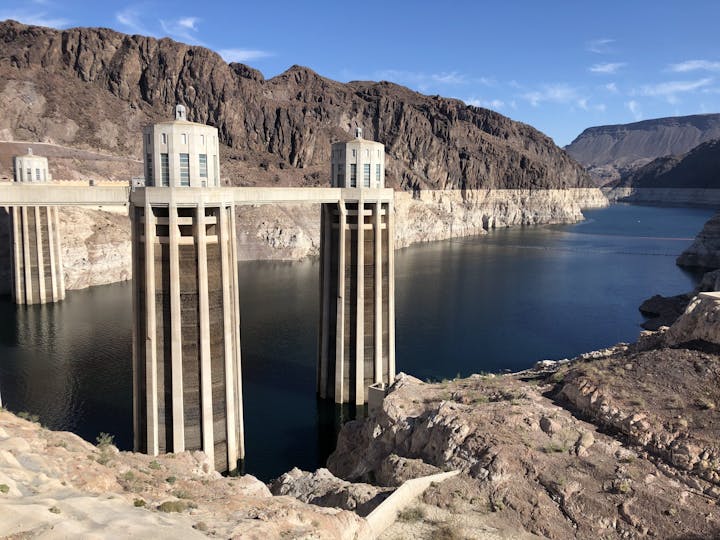The La Plata River Compact | Volume I, Issue 4 of Water Time Reflections
Delph Carpenter and the La Plata River Compact
Volume 1, Issue 4 of Water Time Reflections
Author: Steve Harris, Water Engineer, Certified Water Buffalo, and Southwest Coloradoan
Delph Carpenter at his desk in the Colorado Senate chamber, 1911. Photo courtesy Colorado State University Archives and Special Collections

The La Plata River Compact is also 100 years old this year. It was negotiated between Delph Carpenter from Colorado and Stephen Davis from New Mexico during 1922 and finalized at Bishop’s Lodge in Santa Fe, New Mexico. I could not find minutes or detailed information on the negotiations between Carpenter and Davis and so relied upon information in Daniel Tyler’s biography of Carpenter titled Silver Fox of Rockies.
The La Plata River contexts parallels the interstate situation on the Colorado River—with the source of water in one state and much of the use primarily in a downstream state. In the case of the La Plata River, the snow in the La Plata Mountains in Colorado was the source of the water in the river, but most of the water use was developed in New Mexico earlier than in Colorado.
As with the Colorado River, if the prior appropriation doctrine had been followed at an interstate level, the downstream state, New Mexico, would have been entitled to most of the water. In Carpenter’s biography, Tyler speculates that the negotiations with Davis on the La Plata River proved the concept for the Upper and Lower Basin split at Lee Ferry. Following approval by the Colorado and New Mexico state legislatures, as well as the U.S. Congress, the La Plata River Compact was signed by President Coolidge in January 1925.
The La Plata Compact is a fairly simple three-page document. It states that New Mexico can call for one half of the flow at Hesperus, Colorado up to 100 cfs between February 15th and December 1st each year, which will be checked at the gage within one mile of the state line. That is the crucial criteria but there are other aspects of the compact if you care to read it.
Some Colorado water users, led by the La Plata and Cherry Creek Ditch Company, argued that their Colorado water rights superseded the La Plata River Compact and therefore their water could not be curtailed without compensation. The case of Hinderlider v. Cherry Creek Ditch Company (Hinderlider was the State Engineer at the time) was initiated in June 1928 at the District Court level to address the issue. The District Court ruled against the Colorado water users, but on appeal the Colorado Supreme Court reversed the District Court and ruled in favor of the water users. The case was appealed to the U.S. Supreme Court who ruled the case was to be returned to the District Court. The case was again presented to the U.S. Supreme Court and unlike the first time, the U.S. Supreme Court ruled on April 5, 1938, that the La Plata River Compact had precedent over state water rights. This ruling proved integral to Delph Carpenter as he negotiated compacts on the Colorado, La Plata, South Platte, and other rivers.
I have sometimes said the La Plata River should be called La Plata Creek because it has minimal flow, especially when compared to the irrigation needs. However, in 1922, the situation on the La Plata River played a key role in development of Delph Carpenter’s vision of how to allocate water between Colorado and other states using Colorado River water. At least in this way, and many others, the La Plata has earned its “river” status in the history of our region.
Harris Water Engineering has been in business for nearly 40 years and is one of 28 local partners that support the Water Information Program which provides balanced water educational programs and content to southwest Colorado. Thank you!





